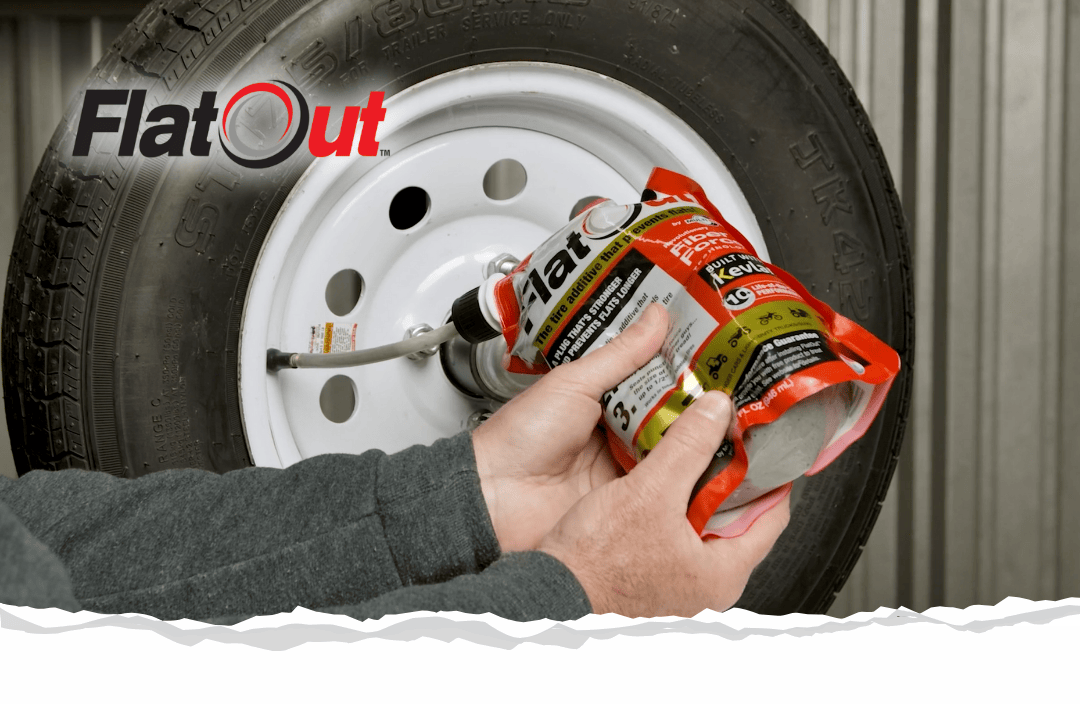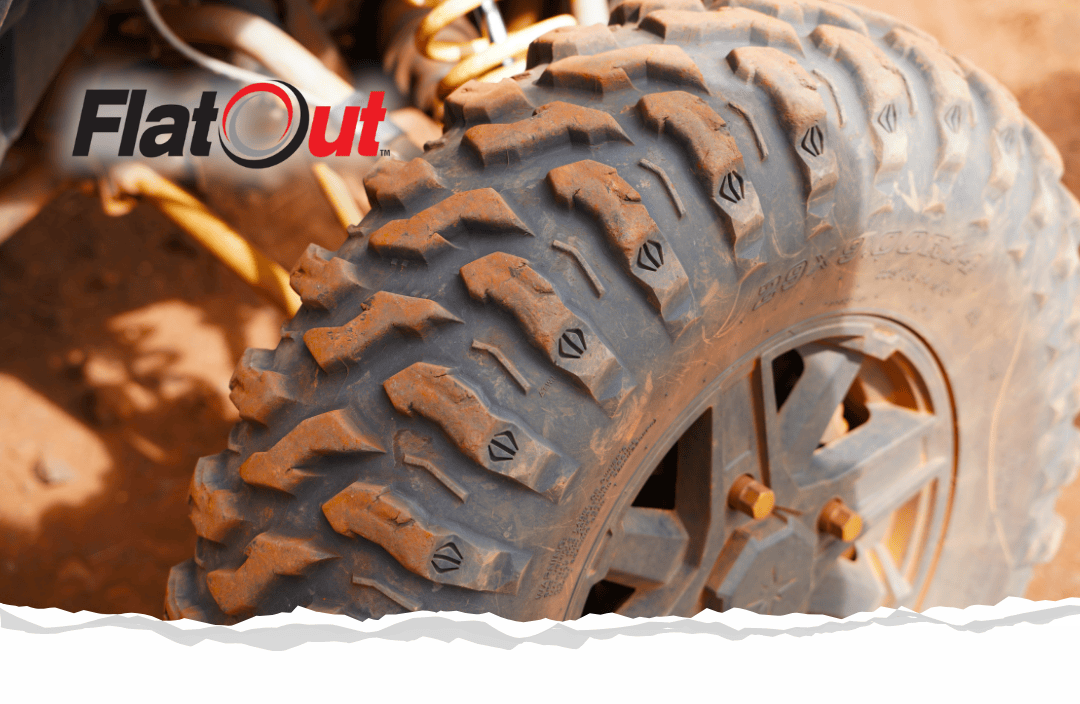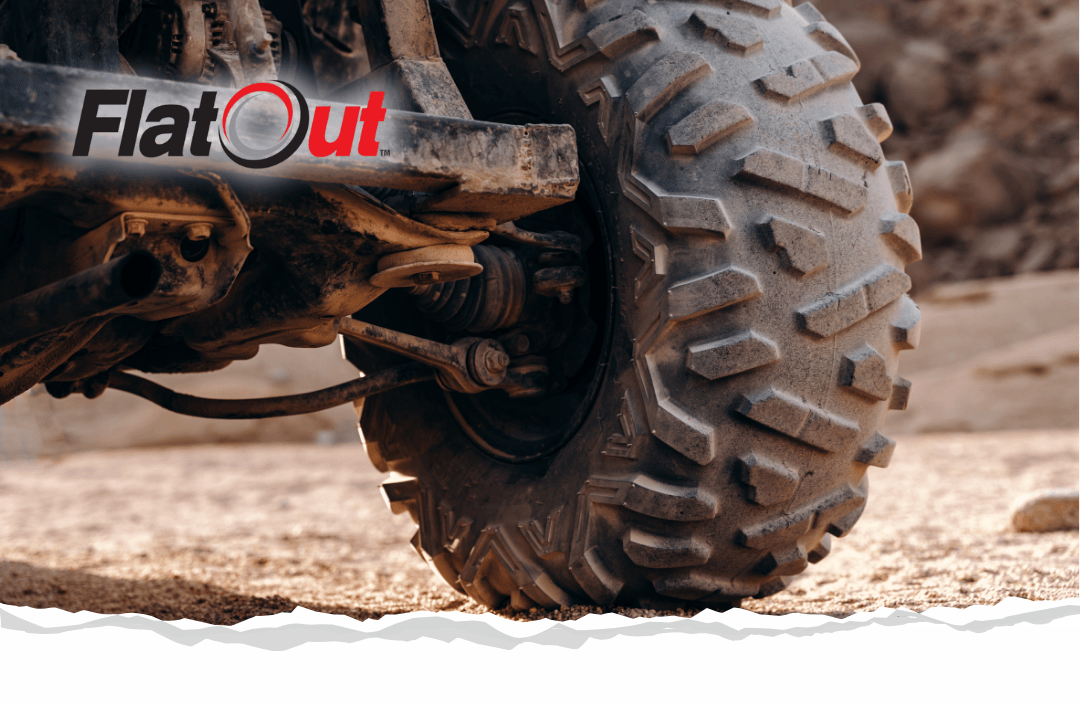
How to Add Tire Sealant to a Tubed or Tubeless Tire (+ How Often)
Even a small puncture can ruin your weekend. FlatOut not only seals punctures, it also prevents slow leaks around the

If you’re on a weekend trip, a flat tire can delay your plans and put a damper on the whole thing. FlatOut™ tire sealants are a game changer when it comes to keeping you on the trail and keeping you to your plans. It seals slow leaks and punctures up to ½’’, so you can spend your weekend enjoying the outdoors and not in the tire shop. But if you haven’t used FlatOut™ before, you might have some questions before you buy it and install it on your tire. You might be asking how long it lasts or how tire sealant works. We’re here to break it down!

FlatOut™ is basically made up of three parts: the liquid base, the fibers, and the fillers. The base liquid suspends the fillers and fibers so they’re ready to jump into action when a puncture occurs. The fibers and fillers are made up of many different materials that help seal punctures, one of those being DuPont. You’ve probably heard of Kevlar before. It’s used in bulletproof vests, body armor, and other military gear. It’s a high-strength fiber that helps seal punctures and create durable plugs inside the tire.
FlatOut™ tire sealants protect your tires in two ways: sealing punctures and sealing slow leaks. Both of these functions start with the install. Check out how to install FlatOut™ here.
As you drive, FlatOut™ disperses in your tire. Our formulas stay liquid and don’t dry out, so it moves with your tire instead of sticking to the inner liner. When you run over a nail, thorn, or something else that punctures your tire, the escaping air forces the sealant into the puncture. The weight of the vehicle and the flexing of the tire compacts the fibers and fillers to form a permanent plug.
While sealing punctures is the showstopper when it comes to FlatOut™, especially for our demos, slow leaks are even more common, and it’s important to know how tire sealant works to seal them. Slow leaks can occur for several reasons, including leaks around the bead or valve stem, or just the natural porosity of the tire’s rubber. As your tires spin, FlatOut™ flows into these small leaks and seals them in a similar fashion to how it seals punctures.
Our industrial line of tire sealants, MULTI SEAL™, works the same way as our FlatOut™ formulas. They are just designed with heavy-duty tires and extreme work conditions in mind. Our formulas are adjusted to work best for their intended applications. Use our chatbox below to learn which formula you need or check out all our formulas here.
Whether you’re hitting the trails on your eBike or managing a job site with heavy-duty equipment, FlatOut™ and MULTI SEAL™ formulas are your first line of defense when it comes to slow leaks and punctures. These tire sealants will keep your tires rolling and your plans on track.
Now that you know what’s going on in your tires and how tire sealant works, snag some FlatOut™ for your equipment here!

Even a small puncture can ruin your weekend. FlatOut not only seals punctures, it also prevents slow leaks around the

When it comes to protecting your tires, not all tire sealants are created equal. While some sealants promise to get